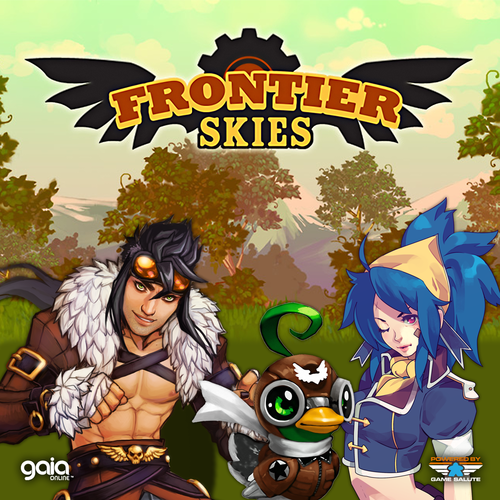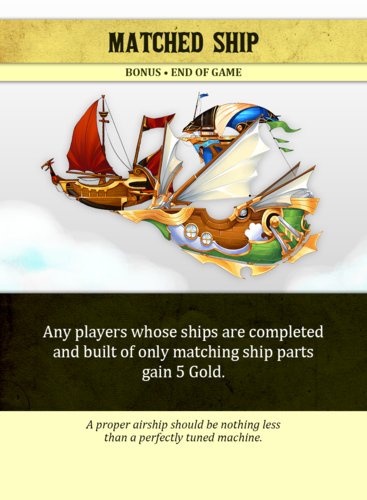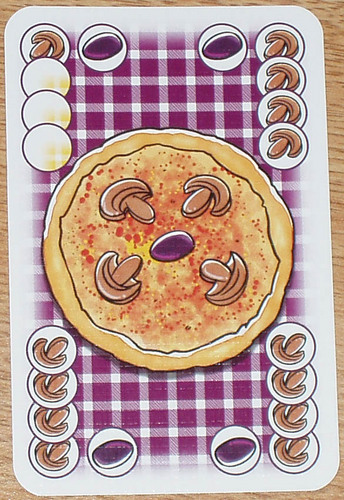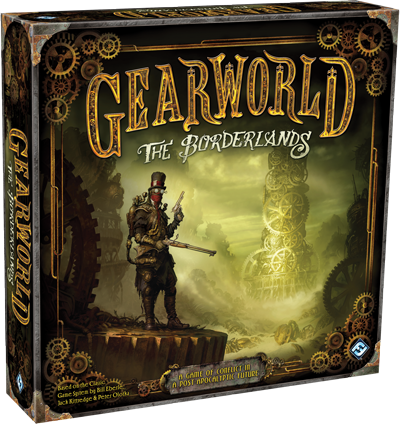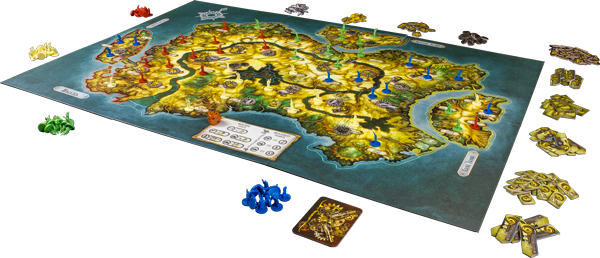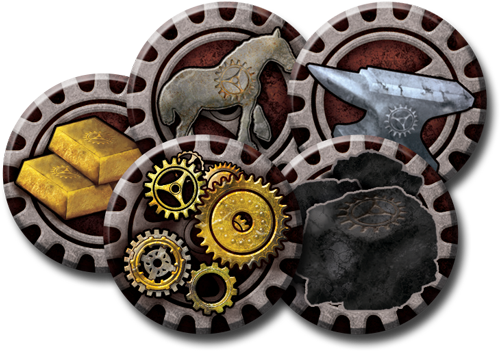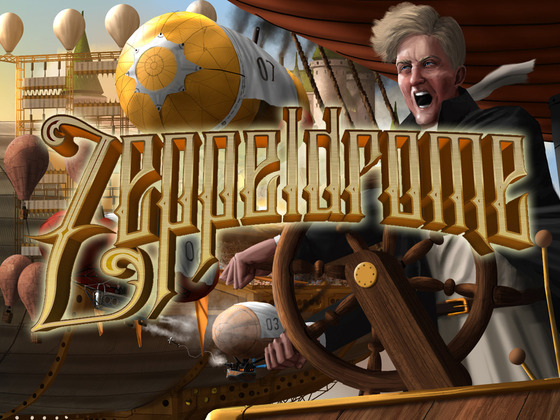 Yes, they're chaotic, and unpredictable, and sometimes full of take-that mechanics, but race games are also pretty stinking fun.
12SP Entertainment has just launched a new racing contender on Kickstarter—Zeppeldrome: A Humorous, Hazardous, Dirigible Relay. So is it worth your money to back this project? Or will it crash and burn, Hindenberg-style? Let's find out.
Yes, they're chaotic, and unpredictable, and sometimes full of take-that mechanics, but race games are also pretty stinking fun.
12SP Entertainment has just launched a new racing contender on Kickstarter—Zeppeldrome: A Humorous, Hazardous, Dirigible Relay. So is it worth your money to back this project? Or will it crash and burn, Hindenberg-style? Let's find out.
The Basics
You're a dirigible captain, competing against other dirigible captains in a race. You'll have to fight your way through numerous hazards to claim the prize—all while messing with your opponents' plans, just as they mess with yours...
The Components
Please note that the copy we reviewed was a prototype. The final components will be better, and some may have changed.
● 10 Double-Sided Playing Board Sections
● 4 Dirigible tokens
● 4 Flight Plan covers in corresponding colors
● 4 Movement cubes in corresponding colors
● 70 Flight Plan Cards
● 8 Ballast Tokens
● 1 Chunk-Chunk Token
● 4 Old Folks Tokens
● 7 Lemming Tokens
● 20 Vector Chits
 The Setup
The Setup
First you're going to pick which four hazard boards you'll be using. The boards are divided into A, B, C, and D sections, which indicates which order they'll go in. If you want a shorter game, you can choose to use fewer sections. Then you'll randomly choose the order players will start the race, and put each player piece on the starting spaces. Each player grabs a color, and its associated pieces. Then shuffle the Flight Plan cards and deal each player four of them, and place the rest as a draw pile.
Two things before we move one. First, you determine who is in the lead(or sequence) by looking at the dirigible closest to the finish line. If multiple dirigibles are in the same column, then it's the one that's closest to the top that is in the lead.
Second, each Flight Plan card has a top section and bottom one. The top one shows a flight plan, and the bottom shows an action. You'll be using each card for only one of those things, so whenever you get a card you'll be looking at each card and determining which section is best for you right now.
The Gameplay
On your turn you'll have four cards in hand. Each player will pick a card to play for the Flight Plan portion. That will constitute the "base" that you'll be flying. Everyone picks one, and then you simultaneously reveal them. Each player has a little card, that matches his or her player color, that you can use to cover up the bottom portion so everyone can quickly see your color, and what you'll be doing that turn.
It may be that none of the cards have a flight plan y0u want to follow. In this case you'll just leave the card facedown on the "reveal." Each card has a single-movement-in-any-direction icon on it, and you'll be doing just that for your flight plan.
Now, in sequence order each player has the option to play one of the three remaining cards in his or her hand for its action. Some of the actions hurt, and some help—and some do a little of both. As such, you can choose to play the action on yourself or on another player.
Most cards will affect a dirigible's movement during the regular movement step. The game comes with extra chits with directions on them that you can grab and add either before or after your Flight Plan, depending on the action played.
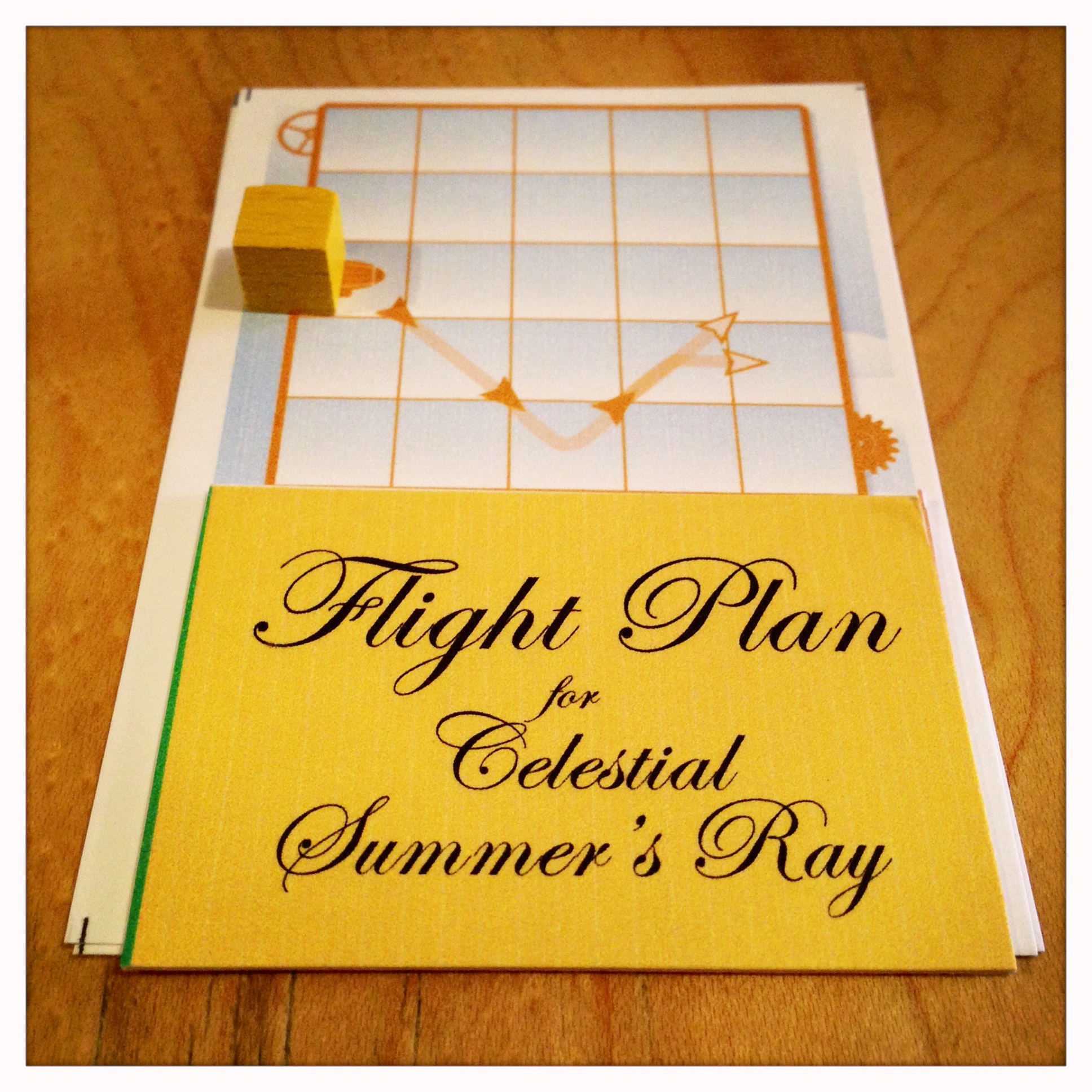 Some action card effects happen immediately. If that happens, move the dirigible immediately, and this might affect the sequence for the next round of cad play. Once each player has had a chance to play one action card, or passed, you'll start a new round. Because things on the board have likely changed, players who passed previously can jump right back in and play a card this round. These rounds of card play continue until every player has passed.
Some action card effects happen immediately. If that happens, move the dirigible immediately, and this might affect the sequence for the next round of cad play. Once each player has had a chance to play one action card, or passed, you'll start a new round. Because things on the board have likely changed, players who passed previously can jump right back in and play a card this round. These rounds of card play continue until every player has passed.
Now the movement phase begins with the person in the lead. Movement is the only "tricky" part of the game, but because of the mechanisms it has to be. First, you take a cube and move it onto the farthest left vector of your Flight Plan—which might now have extra vectors attached to it, thanks to action cards. Once you've done that, then you'll attempt to move your dirigible piece on the board. If your dirigible runs into a hazard, or another player, it simply bounces back to the space it came from. But the cube remains on the vector, because you've attempted that move. Some Flight Plans have alternate routes, designated by an open arrow (rather than the solid one you'll usually see). In order to take that route, you'll need to discard a card from your hand.
Once each player has moved—or attempted to move—on the first vector, then you go to the next one. But player order may have changed now, and you use the new player order. This might change after every single vector, but that's just part of the game.
People will start running out of vectors on their Flight Plan, and as they do, they're just done. Others continue moving until they run out of vectors, too.
Once everyone has moved, each player can discard any unwanted cards, and then draw up to four cards.
Once someone crosses the finish line, he or she is declared THE WINNER!!!
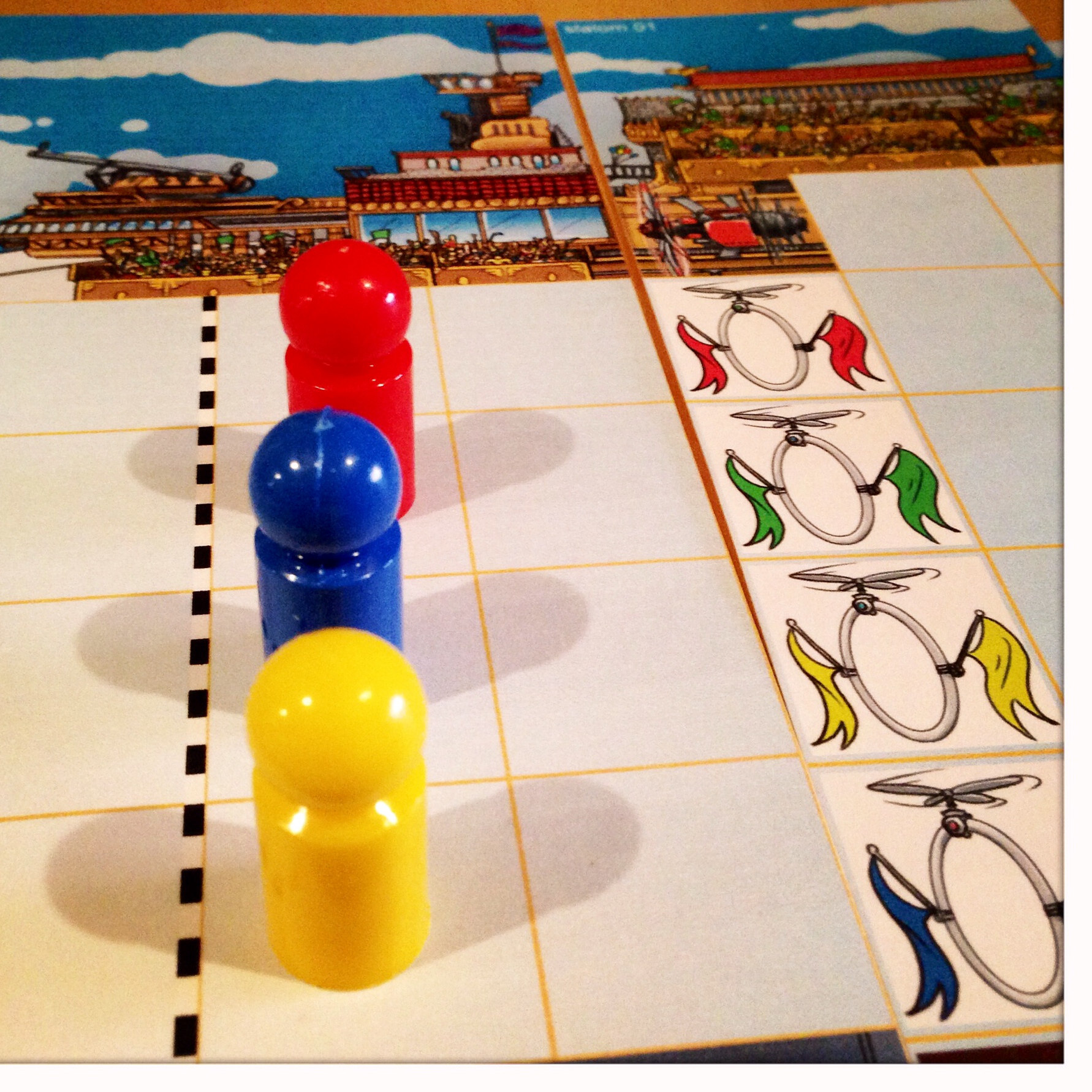 The Hazard Boards
The Hazard Boards
We'll just highlight a few of the hazard boards. Again, some of these might change, or become promos, or whatever. This is just to give you idea of what sort of things are on the boards.
A Bit of Ballast—On this board are a number of tokens depicting anvils connected to balloons. If you stop on a space with one of these tokens, you can pick one up and keep it with you. You immediately move one space down. At any time you can drop one of these ballast tokens to immediately raise up one space. You can have (and drop) multiple tokens at the same time.
Inspiration Point—If you end your move on this board, you can draw up to five cards instead of four.
Slalom 1—There are four gates on this board, each in one of the player colors. You HAVE to move through your color of gate in order to proceed to the next board.
Slalom 2—This is just like Slalom 1, except there are gates at the start and the end of the board. And the colors aren't lined up...
Headwinds—Dirigibles cannot move straight forward on this board. All other movement directions are okay, but any straight forward move results in a bounce.
Four Old Folks Looking for the Farmer's Market—These are four balloon tokens that start on the board in predesignated spaces. After action cards have been played, but before movement, the player in last place gets to move each on of the tokens to any adjacent open space. They block movement just like any other obstacle, and dirigibles will bounce.
There are others, but you get the idea...
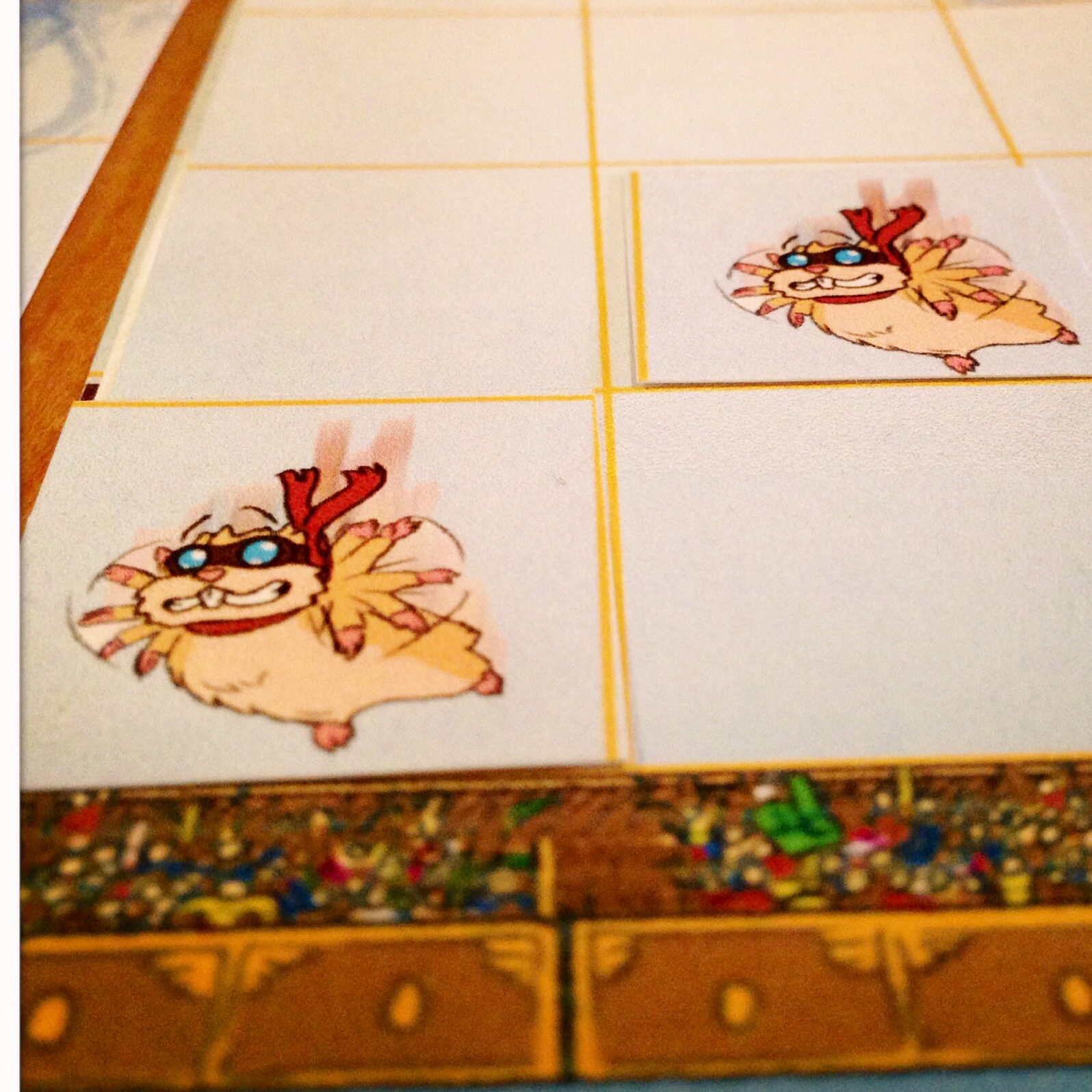 The Verdict
The Verdict
Firestone—Two turns into this, my 9-year-old said, "This is a really fun game!" And that pretty much sums up my thoughts, too. This was fun. While I'm generally not a fan of take-that, and mess-with-your-opponent games, it fits the theme here. It reminds me of the old Hanna-Barbera "Wacky Races" cartoon—except everyone is Dick Dastardly and Muttley, trying to jockey for position by sabotaging opponents.
Jeremiah—Yeah, this is a fun take-that game with some great puzzle-solving strategery involved. The art and theme constantly reminded me of a Monty Python-esque universe in the animation style of Terry Gilliam. Pretty outrageous, and absurd all at the same time. It made for a lot of fun. I will say that my 5-year old did have a tough time getting through this on;, it seems like it's a game he would hang in there with, but I had to give more than a moderate amount of advice to him each turn.
Firestone—The hazard boards are a great way to introduce variability, replayability, and humor into the game. I generally like racing games, but the only real variability in games such as Mississippi Queen and Snow Tails is that sometimes the track will go this way, and sometimes it will go that way. That's good, because static tracks get boring quickly, but these hazard boards make every game really feel different. And it's ripe for expansions—either from 12SP themselves, or fan-made boards people post on Boardgamegeek. That's going to give Zeppeldrome legs...
Jeremiah— I totally agree: The board and card concepts make this game exponentially expandable, and multitudenally (that's not a word) re-playable. I also enjoy the fact that you can create a custom length to the game by adding or subtracting game boards, without completely breaking down the game and how it plays.
Firestone—The programming can be a little complex, as you're trying to figure out where your zeppelin might end up, and when that might happen. You also have to look at what other people's programs look like, because someone moving to a spot before you will cause you to bounce back to where you were, and that will affect your programming. That puts it on the upper end of the Nongamer Complexity Spectrum (tm) for me. Not a dealbreaker at all; just be aware.
Jeremiah—Yeah, like you said, whereas most race games are very non-gamer friendly, this one can lead to tons of analysis paralysis, and many, many threats of the cutting off of hands, or other forms of bodily harm in order to get the game moving again. I think the general rule of thumb is either play every action card on yourself, or every action card on someone else to try and mess them up. Splitting your strategy seems to be a bit confounding.
Firestone—I like how you can strategically fail a move, just to allow you to do what you want. You're limited by what the cards in your hand will allow you to do, but there are ways to manipulate it in your favor. That adds a lot for me. There's still chaos, mind you, but also some strategy.
Firestone—The only word of caution here is one of the cards: It's called "Captain Ernst's Cheapass Engine." This is a nod to James Ernst, who founded the game company Cheapass Games, which has small, cheap games that simply provide you with a set of rules, and you cobble together the needed pieces from other games. There are two of those cards in the game, and I simply took a pen and drew over the word "ass." It was a simple fix, though I wish I hadn't had to make it—especially since everything else about the game is so perfect for playing with your family!
Jeremiah's Final Verdict— Go back this game! Zeppeldrome is a fun family game that will get you some great replay value; it's a fun theme that will engage both gamer folks and non-gamers alike! There's plenty of fun, decision-making, an,d of course, a touch of chaotic take-that, which leads me to say, put this game on your table!
Firestone's Final Verdict—Zeppeldrome is a fast, fun race game. The programmed movement works well. The variable boards mean most games with be different. And the ability to mess with your opponents feels right in this sort of racing game. My family has had great fun with this one, and you should definitely put this game on the table! (After you back it on Kickstarter, of course!)
We'd like to thank 12SP Entertainment for providing prototype copies of the game for us to play. This was NOT a paid preview.
Stay tuned for more on this game—including an interview with co-designer Anthony Gallela next week! Thanks for reading!







